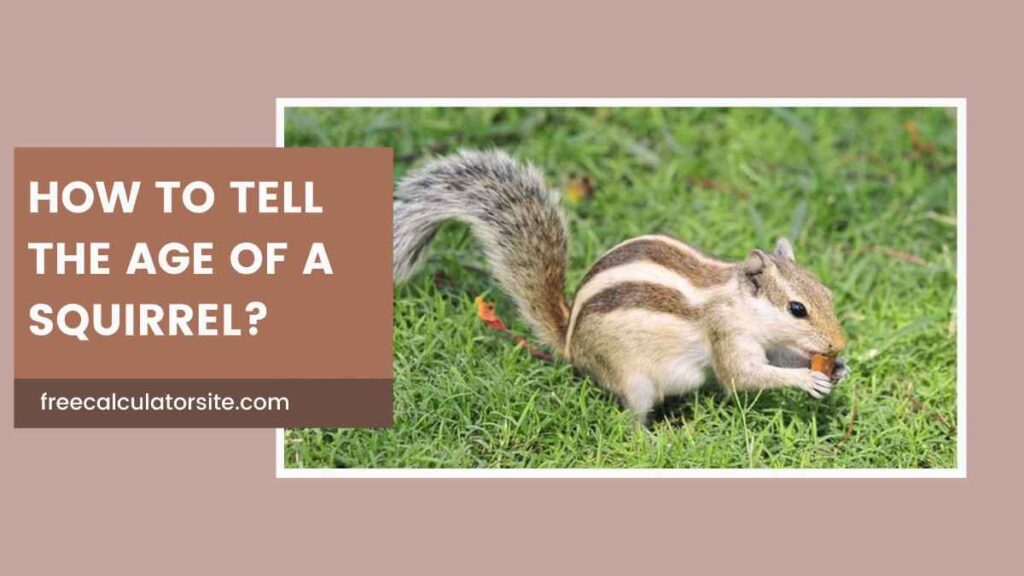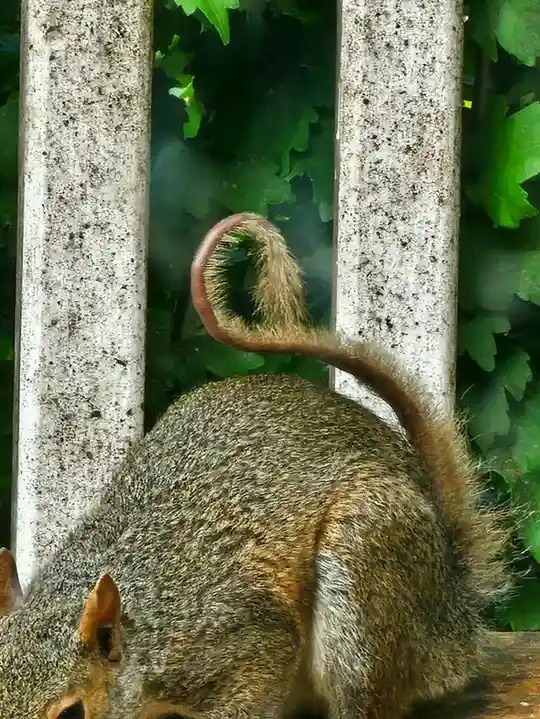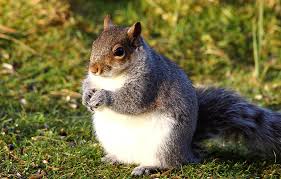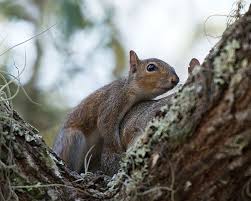Last updated on September 8th, 2024 at 01:45 pm

Squirrels are a common sight in parks, forests, and even urban areas, captivating observers with their agile movements and bushy tails.
However, determining the age of these small mammals can be quite challenging.
Whether you’re a wildlife enthusiast, a researcher, or simply curious, understanding how to estimate the age of a squirrel can provide valuable insights into its behavior, health, and life expectancy.
In this article, we’ll explore various methods and indicators that can help you accurately estimate a squirrel’s age.
1. Physical Characteristics: Fur and Tail

One of the most straightforward ways to estimate the age of a squirrel is by examining its fur and tail.
As squirrels age, there are noticeable changes in the appearance and texture of their fur, which can serve as reliable indicators of their age.
- Juvenile Squirrels (Up to 6 Months Old): Juvenile squirrels typically have sparser fur compared to adults. Their fur is often lighter in color and may appear thinner, especially around the tail area. The hair on their tails is short, dense, and not as bushy as that of an adult. The fur on the body may also show a lack of pigmentation, giving them a somewhat pale appearance.
- Subadult Squirrels (6 Months to 1 Year): As squirrels grow older, their fur becomes denser and more pigmented. The tail begins to fill out and becomes bushier, though it may not yet reach the full fluffiness seen in mature squirrels. The overall coloration of the fur becomes more vibrant, and patterns may start to emerge.
- Adult Squirrels (1 Year and Older): Adult squirrels have fully developed, thick fur that is rich in color and pattern. The tail is usually long, bushy, and well-defined, serving as an important tool for balance and communication. The fur around the genitals may also change color, becoming darker or more distinct in older individuals.
2. Body Weight as an Age Indicator

Another method to gauge the age of a squirrel is by assessing its body weight.
Squirrels tend to gain weight as they mature, and this increase in body mass can be used to differentiate between juveniles, subadults, and adults.
- Juvenile Squirrels: Young squirrels are typically lighter in weight, as they are still growing and developing. Their bodies are more slender, and they may appear smaller in size compared to older squirrels.
- Subadult Squirrels: As squirrels reach the subadult stage, they begin to put on more weight, especially as they prepare for adulthood. They start to fill out, and their muscles become more developed, giving them a more robust appearance.
- Adult Squirrels: Fully grown squirrels have reached their peak body weight, which can vary depending on the species and environmental factors. Adult squirrels are generally more muscular and have a well-defined body shape, making them appear larger and more imposing than their younger counterparts.
3. Observing Behavioral Patterns

Behavioral patterns can also provide clues about a squirrel’s age.
As squirrels mature, their behavior changes, and these changes can be observed in their interactions with other squirrels, their foraging habits, and their overall activity levels.
- Juvenile Squirrels: Young squirrels are often more playful and curious, frequently engaging in chasing games with their peers and exploring their surroundings with enthusiasm. They may also be less cautious and more prone to taking risks, as they are still learning about their environment.
- Subadult Squirrels: As they transition into subadulthood, squirrels become more focused on survival-related activities, such as foraging and nest-building. Their playfulness decreases, and they start to establish territories and hierarchies within their social groups.
- Adult Squirrels: Adult squirrels are usually more cautious and territorial. They have established routines for foraging, nesting, and interacting with other squirrels. Their movements are more deliberate, and they are less likely to engage in playful behavior, focusing instead on securing food and maintaining their territory.
Also Read: How to Tell the Age of a Raccoon
4. Sexual Maturity and Reproductive Signs

Sexual maturity is another key factor in determining the age of a squirrel.
Most squirrels reach sexual maturity between 10 and 12 months of age, and signs of reproductive activity can indicate that a squirrel has reached adulthood.
- Juvenile Squirrels: Juveniles have not yet reached sexual maturity, so there will be no signs of reproductive activity. Their genitals are not fully developed, and there will be no indication of mating behavior.
- Subadult Squirrels: Subadult squirrels may start showing early signs of sexual maturity, such as the development of secondary sexual characteristics like swollen mammae in females or changes in the fur coloration around the genitals.
- Adult Squirrels: Adult squirrels exhibit clear signs of reproductive maturity. Females may have swollen mammae, especially during the breeding season, indicating that they are nursing young. Males may have more prominent genitalia, and both sexes may display mating behaviors such as chasing and vocalizations.
5. Dental Examination: A Laboratory Approach
For a more precise age determination, especially in research settings, dental examination is a commonly used method.
By examining the teeth, particularly the molars, researchers can estimate the age of a squirrel with a higher degree of accuracy.
- Cementum Layers: Squirrels’ teeth develop layers of cementum, a calcified tissue, as they age. During the summer, a broad opaque layer of cementum is deposited in the roots of the molars, while a narrow dark band forms during the winter. By sectioning the teeth and examining these layers under a microscope, researchers can count the number of layers to estimate the squirrel’s age.
This method is particularly useful for determining the age of older squirrels, where physical characteristics and behavioral observations may not provide enough information.
6. Longevity and Life Expectancy
Understanding the typical lifespan of a squirrel species can also help in estimating its age.
While individual lifespans vary, knowing the average longevity of a species can provide context when aging a squirrel.
- Red Squirrels: In the wild, red squirrels typically live up to seven years, with three years being more common. However, some individuals in captivity have been known to live much longer, with the oldest recorded red squirrel living to 15 years in Japan’s Asahiyama Zoo.
- Grey Squirrels: Grey squirrels have a slightly longer lifespan, with an average of four to five years in the wild. In captivity, they can live much longer, with the oldest recorded grey squirrel living to 23 years and six months at Wisconsin’s Racine Zoo.
Conclusion
Aging a squirrel is not an exact science, but by combining observations of physical characteristics, body weight, behavior, reproductive signs, and, when possible, dental examination, it is possible to make an educated guess about a squirrel’s age.
Whether you’re observing squirrels in the wild or studying them in a laboratory, these methods offer a comprehensive approach to understanding the life stages of these fascinating creatures.
By learning to recognize the subtle differences that indicate age, you can gain a deeper appreciation for the complex lives of squirrels and their place in the natural world.

Akash Singh is a finance enthusiast who shares valuable insights on various calculators.
